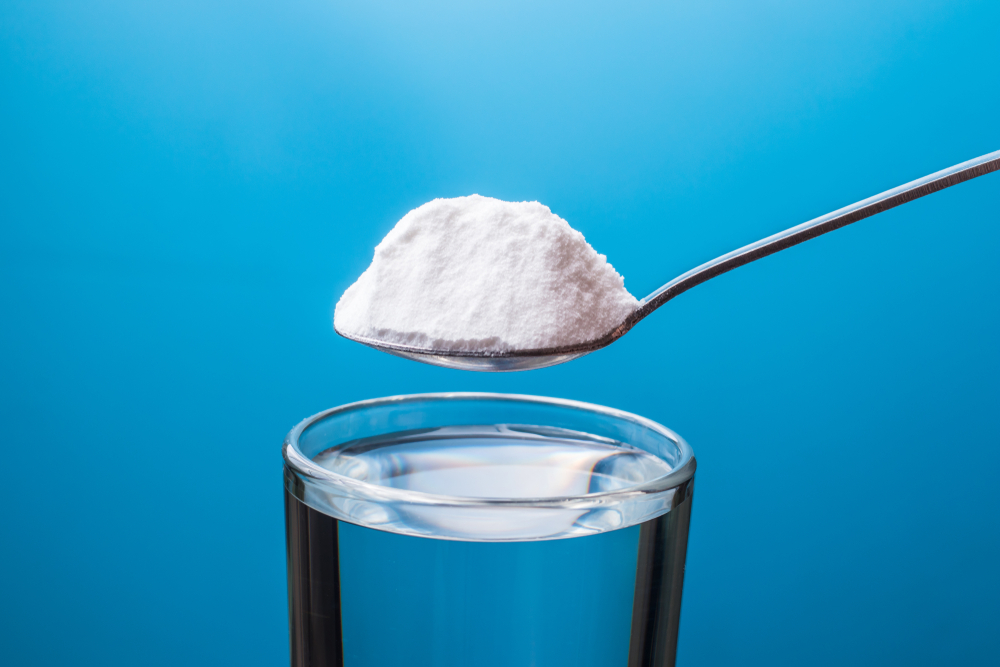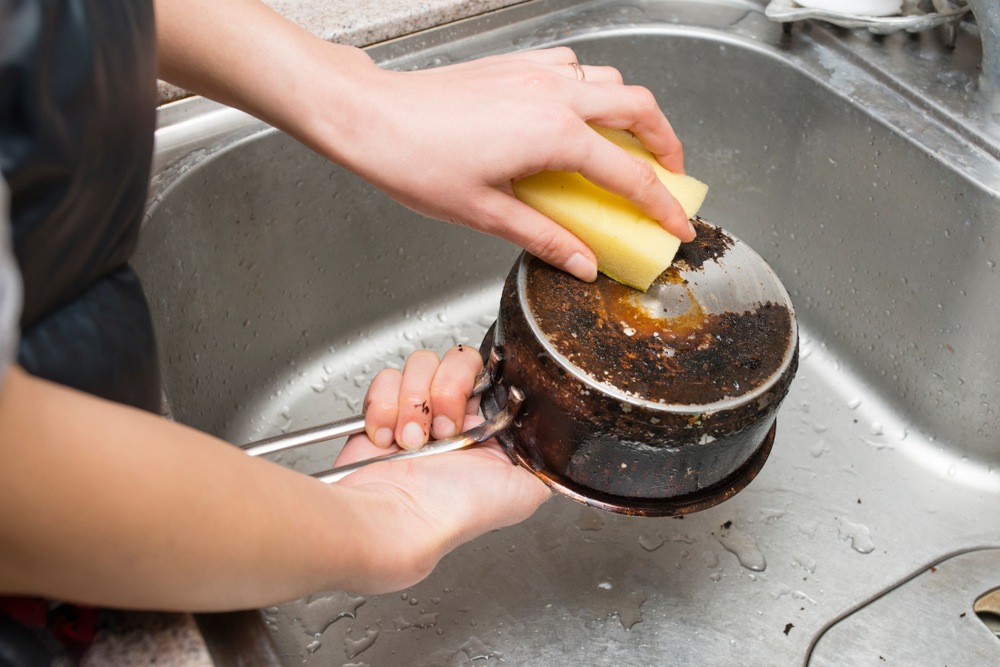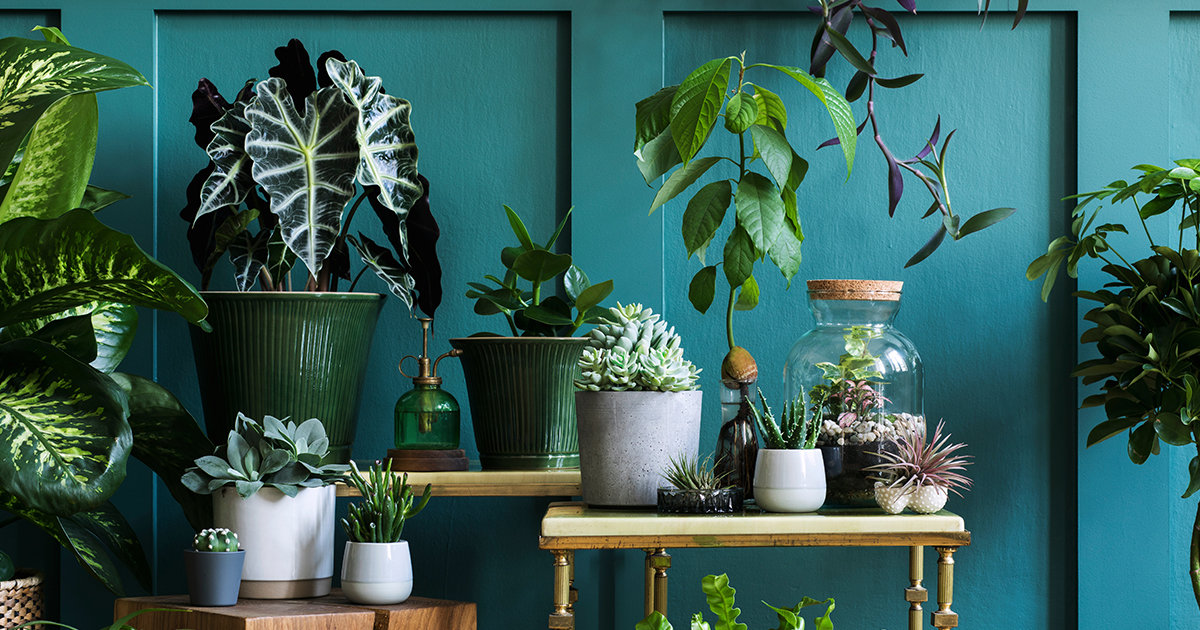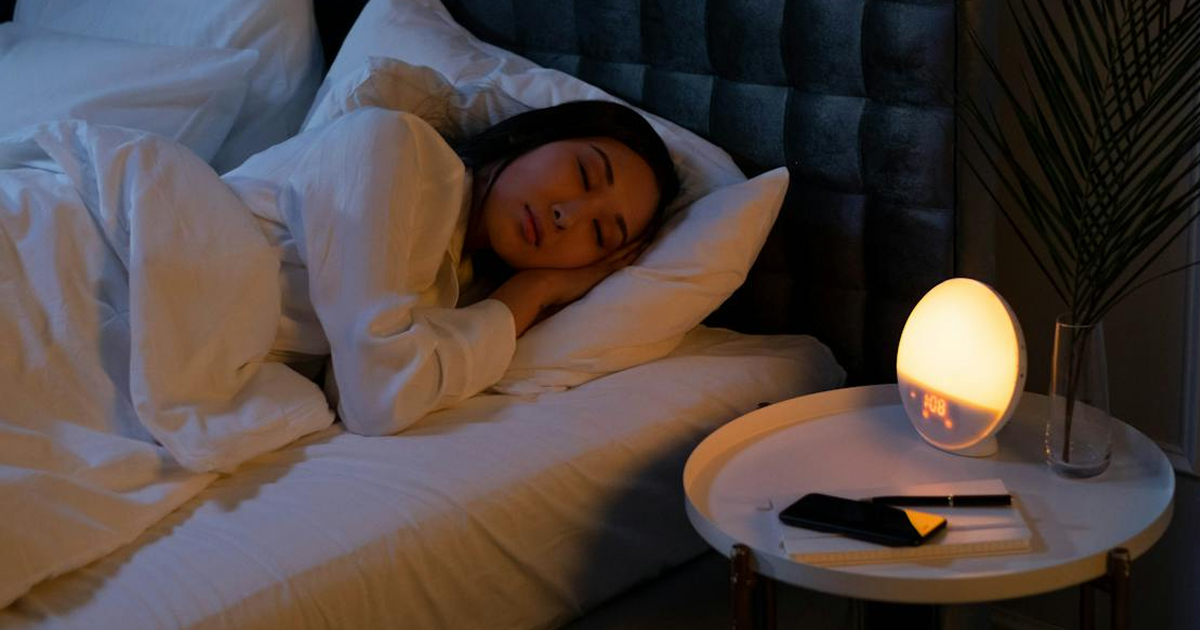The Benefits of Baking Soda
Baking soda—also known as sodium bicarbonate or bicarbonate of soda—is most commonly found in the kitchen as a popular baking ingredient.
But numerous studies have found that baking soda has a plethora of benefits when used outside the kitchen as well.
Here’s 25 beneficial uses of baking soda outside you may not have known—and 8 times you should avoid using it.

As a Tooth Polisher
Baking soda is a great way to remove plaque—the sticky film of bacteria that layers your teeth, and hardens over time.
Simply dip a wet toothbrush in baking soda and brush as usual.
As a Mouthwash
While on the topic of oral care, baking soda makes a great mouthwash as well—especially in combatting bad breath.
Swish a teaspoon of baking soda in a half glass of water and rinse your mouth.
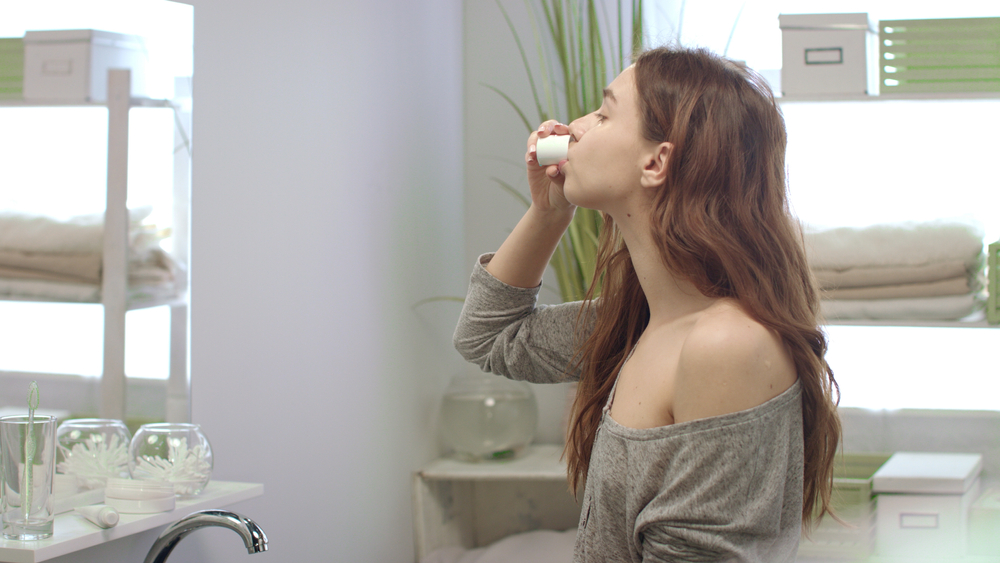 Depiction Images, Shutterstock
Depiction Images, Shutterstock
As a Body Deodorant
Most things with a strong smell have acidic or basic odor molecules. Baking soda brings them to a more neutral, odor-free state. This works well for many things—body odor being one of them.
Simply dust a little (not too much) baking soda under your arms in the morning.
Note: Baking soda is much more alkaline than your skin and could disrupt your skin’s natural pH balance. If you’d prefer, find a stick deodorant that contains sodium bicarbonate.
As an Itch Reducer
Baking soda works great for soothing itchy skin. Whether from insect bites, poison ivy rash, or heat rash, baking soda can really help soothe the skin.
Add half a cup of baking soda to warm bath water and soak for a little while.
Or, make a paste of 3 parts basking soda to 1 part water and smear it on the affected area. Leave for 20 minutes and wash off.
To Ease Sunburn Discomfort
Baking soda can be an excellent way to ease pain from a sunburn.
Soak a washcloth in a solution of about 4 tablespoons of baking soda per quart of water. Gently dab it on the affected areas to soothe your skin.
To Reduce Acid Reflux
Sodium bicarbonate helps fight heartburn and acid reflux—the extra acid that might rise from your stomach up to your throat and mouth after eating.
You can buy a chewable tablet from the pharmacy, or you can make your own drink by mixing a half-teaspoon of baking soda in 1/2 cup of water.
Note: Talk to your doctor before giving it to kids under age 6, or if you start using it regularly along with other medications.
As a Facial Scrub
Baking soda is mildly abrasive, and along with its antibacterial properties makes an effective facial cleanser.
First, wash your face with a mild, non-abrasive cleanser and rinse with water. Then, make a paste of 3 parts baking soda to 1 part water. Gently rub it in a circular motion for a deep clean. Rinse with water.
To Clarify Your Hair
Baking soda can clean anything—including hair. It also makes hair easier to style.
Mix a teaspoon of baking soda with your favorite shampoo to remove buildup from sprays, gels, conditioners, and other products.
To Soften Your Skin
Many people keep a jar of baking soda in the bathroom, considering its many uses for hair and skin.
Adding half a cup of baking soda to your bath water will neutralize acids, wash away sweat and oil, and leave your skin silky smooth.
 Creative Cat Studio, Shutterstock
Creative Cat Studio, Shutterstock
To Clean Toys
Instead of using harsh chemicals to clean your baby’s toys, opt for baking soda instead. It’s excellent at cleaning grime off toys, highchairs, bouncers, etc.
Simply mix baking soda with warm water and wipe down surfaces. Or, soak smaller objects in a sink mixed with baking soda and warm water.
To Freshen Dentures
Soak your dentures in warm water mixed with 2 teaspoons of baking soda to loosen food, get rid of odors, and freshen any lingering bad taste. You can also make a paste and brush them with a toothbrush
This also works for retainers and mouth guards.
In Your Laundry
Baking soda should be a staple in the laundry room. By adding half a cup to each load, detergents can work more effectively and reduce bacteria.
It also reduces odors, takes out stains, and leaves your clothing feeling softer.
For strong odors like smoke, soak the clothing in a cup of baking soda and warm water prior to washing.
 cottonbro studio, Shutterstock
cottonbro studio, Shutterstock
To Remove Odor from Carpet
Sprinkling baking soda onto your rug or carpeting before vacuuming can help take odors out of the fibers and make it easier for the machine to pick up other dirt particles.
Sprinkle and let it sit for about 10-15 minutes before vacuuming as usual. The longer the baking soda stays on the rug, the more odor, dirt, and oil it will absorb.
For heavily soiled areas, leave the baking soda to sit overnight.
To Clean Other Material Surfaces
Just like carpets, baking soda will work to release odors and oils from other materials around the house as well.
Sprinkle it on material surfaces, such as mattresses, sofas, and pillows, and let it sit for 10-15 minutes before vacuuming it up.
To Scrub the Shower
To scrub the shower walls, use a small sprinkle of baking soda and a few drops of dishwashing liquid on a wet microfiber cloth. Rub together to create a lather and then scrub the walls.
To clean the shower floor, sprinkle baking soda across the surface, squirt dishwashing liquid over the baking soda in an "S" motion, and scrub the floor with a wet brush.
Rinse all shower surfaces with warm water.
 Dmytro Zinkevych, Shutterstock
Dmytro Zinkevych, Shutterstock
To Clean Drains
Baking soda can help keep your drains smelling fresh and free-flowing.
Simply run hot water through the drain before pouring in a half a cup of baking soda. Let it sit for 15 minutes and then rinse it down with hot water.
To Unclog Drains
For particularly challenging drains, or drains that are surely clogged, sprinkle a generous amount of baking soda down the drain and then pour heated vinegar after it. The fizzing foam will break up clogs.
Rinse with boiling water after if preferred.
As an All-Purpose Scrubber
We could list everything you can clean with baking soda, but no one has time for that. In general, baking soda provides extra scrubbing power that makes sponges more effective without becoming too abrasive.
Sprinkle it on a damp sponge and clean your surfaces—tubs, sinks, toilets, floors, counters, table tops, and more—and then wipe clean with a wet cloth.
To Cut Through Grease
Baking soda is a winner when it comes to cleaning dirty kitchen pans that have seen better days. If you burnt dinner, you’ll want to reach for the baking soda—and vinegar.
Place the pan in a sink and bring a few cups of vinegar to a boil—either stovetop of microwave. Sprinkle baking soda on the pans and add the boiling vinegar. Let it sit for 30 minutes and then rinse it off. Repeat if needed.
As a Cleaning Agent
Another way to use baking soda for cleaning is by mixing it with hydrogen peroxide. Mixing the two into a paste can be an effective cleaner for tile grout, polishing small appliances, removing water stains from utensils, and removing greasy residue from kitchen pans.
Mix a quarter cup of baking soda with just enough peroxide to make a paste. Use a toothbrush to scrub. Rince thoroughly with warm water.
To Clean the Oven
Making a paste of baking soda and water is also an excellent way to clean the cooked-on mess inside your oven.
Work the paste into every nick and cranny of the oven and then spray with vinegar and let it foam. Repeat spraying as needed until you can easily remove the baked-on food particles.
Deodorize Stinky Shoes
Shoes are a prime spot where odor-causing bacteria thrive. To get rid of stinky odors, sprinkle baking soda inside the shoes—distributing it evenly. Let is sit over night and then shake them out outside.
Eliminate Trash Can Smells
Baking soda can neutralize the unpleasant odors coming from your kitchen trash can. As waste accumulates, periodically sprinkle baking soda in between the layers to control smells.
Refrigerator Odor Neutralizer
While we’re neutralizing smells, you might as well add your fridge to the list. If your fridge seems to smell like leftovers all the time, try placing a cup full of baking soda at the back of the bridge. The powder will eliminate the odors quickly, and keep it that way.
You can simply open up the box and set it on the shelf, too.
As a Stain Remover
To remove carpet stains, cover the stain with a thin layer of baking soda, spray the area with a mixture of 1 part vinegar and 1 part water, let it sit for about an hour or until it dries. Then, scrub the baking soda loose with a brush and vacuum up the residue.
When NOT To Clean with Baking Soda
Before you start going crazy cleaning everything with baking soda now, it’s important to know what surfaces are safe for baking soda use, and which are not.
Applying baking soda to some surfaces could ruin them.
Here’s 8 things you should never clean with baking soda.
 Krakenimages.com, Shutterstock
Krakenimages.com, Shutterstock
Avoid: Aluminum
According to Angela Brown, CEO of Savvy Cleaner, "Aluminum is a soft metal, and using baking soda to clean it can cause a chemical reaction that dulls or discolors the surface. This is known as aluminum hydroxide, forming when baking soda meets moisture or humidity on aluminum."
Skip the baking soda and opt for another cleaning agent this time.
Avoid: Antique Silver
Marla Mock, president of Molly Maid, says, “Baking soda may scratch or damage the delicate surface of antique silver.” She says it could take away the protective layers in the silver and cause microscopic scratches.
Avoid: Copper Cookware
Similar to aluminum, baking soda shouldn't be used on copper pots and pans if you want them to last a long time.
Experts say baking soda can react with copper, making it tarnish faster.
Avoid: Fiberglass Bathtubs
Baking soda can easily scratch fiberglass tubs. While it might be tempting to use it on an extra-grimy tub surface, you should try something else instead.
Avoid: Marble Surfaces
Avoid using baking soda to clean your marble countertops in the kitchen or bathroom. The baking soda acts as a mild exfoliant, which could break down the protective coating on marble, causing it to look dull or foggy.
Avoid: Leather
Don’t use baking soda on your leather couch, belt or jacket. Leather has natural oils, which keep the material flexible.
Baking soda will strip the oils from those materials, causing it to crack and dry up.
Avoid: Painted Surfaces
Painted surfaces, like a wall or a painted chair, shouldn't be cleaned with baking soda. There is a risk that sodium bicarbonate can create chips or scratches in the paint or affect the smooth surface.
Avoid: Wood
Keep baking soda away from any wood surface, including wood floors, wooden coffee or dining tables, and cutting boards.
The abrasiveness can leave scratches and take away protective coating.






